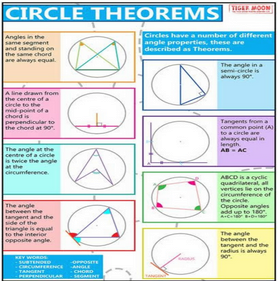The Importance of Circles
Circles are one of the most fundamental shapes in geometry and have significant importance in various aspects of life, science, and technology. Here are some key reasons why circles are important:
Geometry and Mathematics

Circles are essential in the study of geometry. They help in understanding properties of shapes, angles, and distances. The concepts of radius, diameter, circumference, and area are all derived from circles.
Engineering and Design

Circles are used in the design of wheels, gears, and other mechanical components. Their symmetrical properties make them ideal for rotating parts and ensuring smooth motion.
Physics

Circles are involved in the study of waves, oscillations, and circular motion. Concepts like centripetal force and angular momentum are based on circular paths.
Architecture and Construction

Circular designs are used in the construction of domes, arches, and other architectural elements. They provide structural strength and aesthetic appeal.
Technology

In computer graphics and digital imaging, circles are used to create smooth curves and shapes. Algorithms for drawing circles are fundamental in graphic design and animation.
Circular Motion in Mechanics

Circular motion is a type of motion where an object moves along the circumference of a circle. This concept is crucial in understanding the dynamics of rotating systems, such as wheels, turbines, and planets.
Optics and Lenses

The shape of lenses in optical devices like glasses, microscopes, and cameras is often circular. This shape helps in focusing light and forming clear images.
Communication Systems

Circular antennas are used in communication systems to transmit and receive signals. The circular shape helps in evenly distributing the signal in all directions.
Art and Design

Circles are widely used in art and design for their aesthetic appeal and symbolic meanings. They often represent unity, infinity, and perfection.
Biology and Nature

Circles and spherical shapes are common in nature, such as in the cross-sections of fruits, the shape of cells, and the orbits of electrons around the nucleus. These shapes are often efficient and functional.
Sports

Many sports use circular objects or fields, such as basketballs, soccer balls, and running tracks. The circular shape is ideal for rolling and provides a consistent playing surface.
Everyday Life

Circles are found in everyday objects such as clocks, coins, plates, and wheels. Their shape is practical for various uses and functions.